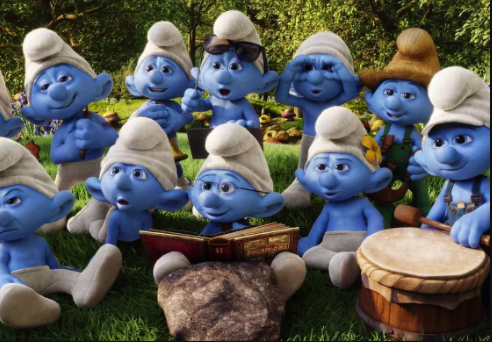Welcome to the newest Guest Post from a worldly museum lover! Each of these posts is like a mini-tour with an expert on a museum topic they’re excited about. So let’s get to know our guide:

Meet Yanru Wang
Yanru Wang is an amateur museum and gallery connoisseur who has lived in China, the United Kingdom, and Singapore, and is now working as a finance professional in Hong Kong. She has visited 60 museums and galleries in 5 countries, and made 60 PowerPoint portfolios for thousands of exhibits.
You find no man, at all intellectual, who is willing to leave London. No, Sir, when a man is tired of London, he is tired of life; for there is in London all that life can afford.
— Samuel Johnson
London is the starting point of my art journey. After having been to 60 museums and galleries in 5 countries, I found that many of the figures either in films or cartoons that I am familiar with ‘appeared’ as ‘low-profile’ exhibits in many museums. Here I will show you the interesting exhibits I have found in the British Museum, paired with their pop culture twins – hope you like it!
‘Jasperware Cameo Figure’ in late-18th century VS ‘Ernest II and The Duchess of Sutherland’ in Drama ‘Victoria’
The earliest indication of archery appeared in Hamburg, Germany. The British initiated the revival of recreational archery as an upper-class pursuit from about 1780-1840. With more and more recreational archery societies being established, due to its strict entry criteria and outlandish costumes, archery became an extravagant and ceremonial event for the nobility.
Please note that the ‘affair’ between the Ernest II and The Duchess of Sutherland is made up only for the telly, as said by the actress of The Duchess of Sutherland.
Cat Goddess Bastet VS Bastet in Drama ‘Tutankhamun’
Bastet is an ancient Egyptian goddess worshipped in the form of a lioness or, later, a cat. She was goddess of the home, cosmetics, cats, love, joy, pleasure, motherhood, childbirth, protection, women, fertility and much more. Ancient Egyptians were one of the first civilisations to have worshipped cats as holy deities. Fun facts regarding this: 1. Egyptians mourned their cats by shaving their eyebrows; 2. Cats were mummified; 3. There was a death penalty for killing cats; 4. When Persian forces tried to conquer the city of Pelusium in 525 BCE they used cats as a weapon to intimidate the enemy.
Bronze Owl-shaped Vessel about 2700 BC VS ‘Snorlax’ in Pokémon
The Bronze Age is an early urban civilisation characterised by the use of bronze. In the ancient civilisation system proposed by Christian Jürgensen Thomsen, bronze is the second prime stage in the three-stage stone-bronze-iron period. It also shows how humans started to facilitate their life by utilising physics (stone) then chemistry (bronze). And I can also see an aesthetic intention to make the vessel more adorable than useful, haha.
Blue-glazed faience shabtis VS ‘The Smurfs’
Shabtis, also called Ushabtis, were adult figures put into the tomb among other grave goods that were intended to act as servants of the deceased, and to be called upon to do manual labour in the afterlife. The colour, Egyptian Blue, is considered the first synthetic pigment. The ancient Egyptians held the blue pigment in very high regard and were eager to show it in many media of various forms.
Guanyin in China VS ‘The Naga King’ in the Ajanta Caves in India
Though many Bodhisattva figures sat straight and had a strict seated pose, there are also some in a “royalty-at-ease” pose, which are much more approachable and relaxed. The pose can be traced back to ‘the Naga King’ in India, which had gained its popularity in China since the Song dynasty.
Yanru would love to share her thoughts on either Asian or European culture, and her experiences visiting the museums and galleries (represented in her photo archive at right). You can contact her by writing a comment to her below.
All essay photos kindly provided by Yanru Wang. Featured image by Ham under CC1.0 license.
2 Comments
Comments are closed.


















Loved the post, was fun to see the similarities with the pop culture haha. Now I’m curious to see what’s inside all those portfolios 😲.
Hope to see more of your content Yanru 😄
Yes, Yanru really opened a new perspective for us! Ancient sculpture will never look the same again!